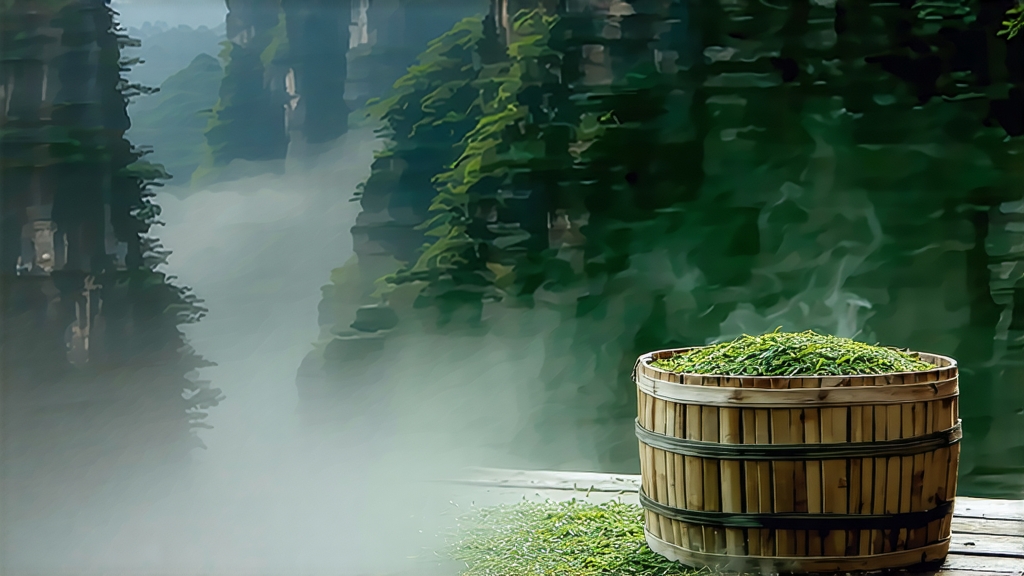
Long before English breakfast tables knew the word “black tea,” caravans loaded with dark, leathery leaves left the granite gorges of northern Fujian. Those leaves were Lapsang Souchong—today celebrated as the first fully oxidised tea ever crafted and the prototype for every subsequent black tea on earth. International drinkers often meet it as a smoky curiosity, yet within China the same leaf is prized for a deep, longan-sweet liquor that carries no smoke at all. The dual identity is only one of many paradoxes surrounding this storied cultivar.
History: from mountain hermit to global celebrity
Local chronicles place the birth of Lapsang Souchong in the late Ming dynasty, around 1568, when a passing army camped in Tongmu Village, Wuyi Shan. To dry the plucked leaves quickly before the soldiers returned, villagers spread them over pine fires. The resulting fragrance—resinous, campfire-warm—was an accident that became a signature. By 1604 Dutch traders had ferried the tea to Europe, where it was christened “bohea” (a corruption of “Wuyi”) and fetched prices higher than silver. The smoky version dominated export markets for three centuries, financing porcelain caravans and, indirectly, the East India Company’s search for tea secrets that would later plant Indian gardens.
Micro-terroir: why only Tongmu can be “original”
Authentic Lapsang Souchong enjoys the same protected-origin status within China as Champagne in France. The core zone—Tongmu Guan—lies inside a national park where humid subtropical air collides with cool mountain drafts, creating perpetual mist that slows photosynthesis and concentrates amino acids. Soils are weathered granite topped by a shallow, acidic humus; the indigenous small-leaf tea bushes, known locally as “cai cha,” send roots into fissures, drawing minerals that translate into a cooling, mentholated finish in the cup. Leaves picked outside this 600–1,200 m belt may be called “souchong-style,” but cannot legally carry the Tongmu seal.
Two faces of the same leaf: smoked vs. unsmoked
- Traditional smoked Lapsang: After withering over pine embers, the leaves are rolled, fully oxidised, then baked above a slow pinewood fire in a three-story drying loft. Resin-rich trunks of Masson pine and Chinese red pine are burned semi-green so that oils volatilise and adhere to the leaf. The entire cycle takes eighteen hours and demands constant hand-turning to avoid scorching.
- Contemporary “wild” Lapsang: Responding to domestic demand for clean, honeyed profiles, many Tongmu artisans now skip the smoke. Instead they oxidise leaves in bamboo baskets lined with cloth, then roast at low temperature over charcoal made from local hardwood. The finished tea is labeled xiao zhong (literally “small sort”) and prized for notes of dried longan, sweet potato and alpine flowers. Both styles share a chocolate-brown strip shape and golden tip flecks, yet cup character diverges dramatically.
Craft in slow motion: a day inside Tongmu
Pickers start at dawn, selecting one bud plus the first two leaves when the morning dew is still visible—moisture that protects against premature bruising. Baskets are rushed to the loft where withering racks hang 1.5 m above gently smouldering pine logs; temperature never exceeds 35 °C so enzymatic activity is coaxed, not forced. Once the leaf loses 60 % of its weight and emits a baked-apple fragrance, rollers knead for 45 minutes, breaking cell walls to invite oxygen. Oxidation proceeds on bamboo trays in a humid room scented of fruit skin; masters judge readiness by the coppery glow of the third consecutive infusion they chew. The final charcoal bake fixes flavour and drops moisture to 3 %, low enough for a five-year shelf life without loss of aroma.
Grading: beyond “smoky”
Western vendors often sell only one grade, yet Chinese connoisseurs recognise a ladder of quality:
- Zheng Shan Xiao Zhong – original mountain, unsmoked, spring pick, noticeable white tips.
- Song Yan Xiao Zhong – pine-smoked, but only the highest leaf/lignin ratio, yielding a clear liquor and lingering coolness in throat.
- Chuan Xiao Zhong – produced outside Tongmu with electric heat